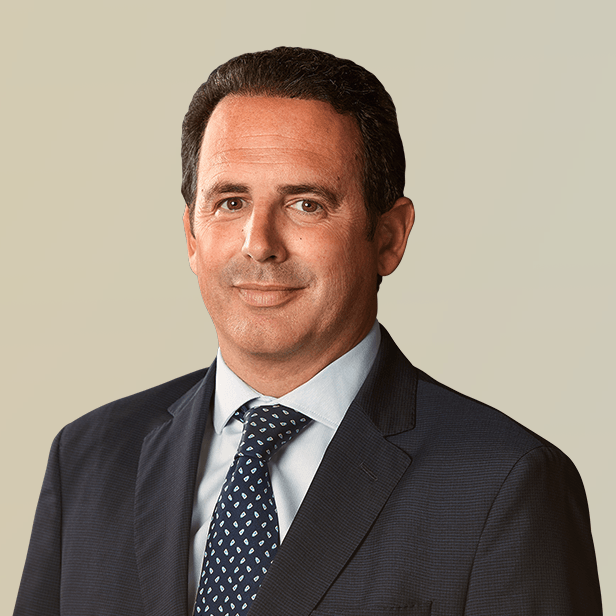Does a Correction Loom? Why This Time Wouldn’t Look Anything Like 2008
Jan 2019
It’s been a bumpy ride of late as 2018 fades into the rearview mirror and we charge ahead into 2019. From see-sawing public debt and equity markets, the government shutdown, tariffs and lingering tension between the U.S. and China, to a significant increase in benchmark rates and an inverted yield curve, conditions have left sponsors wondering if signs point to a likely market disruption.
And yet, 2018 was the second-strongest year for deal making in the wake of the Great Recession, with global M&A volumes up and multiple expansion across debt and equity markets. Lincoln’s proprietary database, which tracks new transactions for over 1,000 middle market companies, shows average enterprise valuation multiples for M&A transactions expanding from 8.0x for deals completed in Q4 2013 to 9.9x for deals completed in Q3 2018. Meanwhile, average debt multiples in the last 5 years have increased from 4.3x to 5.1x. Lincoln credits these trends to the interplay of (1) a supply-demand imbalance driven by access to plentiful, low-cost capital in the lending market with too few transactional opportunities (on a relative basis) to deploy it, (2) the amount of equity dry powder that has been raised, and (3) the willingness of buyers to pay top-dollar for businesses—even those that have weathered some hiccups.
Despite the recent volatility and increase in benchmark rates, broader economic indicators remain sound with Federal Reserve Chairman Powell calling 2018 “a good year for the United States economy,” citing healthy job growth and wage increases in the last employment situation report of the year. Not to mention robust seasonal retail sales indicators in the U.S. point to healthy levels of consumer confidence, even as markets sway.
Without a crystal ball in hand, it’s hard to know what lies ahead for 2019. Even if we face a potential slowdown 10 years after the last crisis, here’s why it will be different than in 2008:
This Time, Liquidity Isn’t Expected to Dry Up
It was a defining moment: once headlines raised alarm bells that the market was tumbling in 2008, borrowers began to tap out their pre-existing bank lines of credit. At the same time, many banks were carrying risky, illiquid assets in their portfolios (think: those pesky mortgage-backed securities) and needed to increase their liquidity on hand. So, they restricted new lending, especially when access to non-deposit funding became harder to come by. Additionally, in the wake of the crisis, new more stringent regulations aimed at preventing risky lending practices curtailed banks’ ability to support highly leveraged transactions. As banks cut off or reduced investment, it dried up significant liquidity necessary to fuel M&A activity.
Our team reminds clients that today, debt capital supporting middle market transactions predominantly comes from a different source: non-bank institutions. Largely spared the scrutiny of regulators in the decade following the crisis, non-bank lenders, from business development companies to credit opportunity funds and private debt funds, have become a larger presence in the financial system—filling the need for liquidity that banks left behind.
These non-bank lenders have significant, committed long-term capital earmarked for middle market lending. Notably, investors can’t withdraw this capital—differentiating non-banks’ sources of funds from that of banks’. Quite simply, we believe that when the next downturn occurs, these non-bank sources of liquidity won’t be shut-off.
Certainly, if the debt capital supply-demand dynamic shifts, leverage available to credit funds is constrained, or macroeconomic factors materially harm company performance, the borrower-friendly terms that have been widely available to middle market borrowers will also change. Non-bank lenders will be able to demand less borrower-friendly terms (e.g., lower leverage levels, increased yields, more onerous amortization requirements, tighter financial covenant cushions, fewer EBITDA adjustments), but, unlike in 2008, significant debt capital should still be available to support robust M&A activity.
Lincoln Perspective
It is impossible to predict with certainty what 2019 and beyond will bring, but when this bull market runs out of steam, additional opportunities will arise for sponsors (with the necessary debt capital available to support transactions). With a significant amount of equity dry powder on the sidelines, limited investment periods for sponsors, and changes in carried interest taxation, private equity firms have incentive to put capital to work. In parallel, debt funds have long term capital and some of the same incentives to deploy that capital for their investors. These dynamics suggest that capital in the middle market will remain available in the next downturn in contrast to what occurred in the Great Recession, when banks pulled capital back, CLO funding dried up and hedge funds faced massive redemptions.
As sponsors seek investment and realization opportunities in today’s environment, here are four things to consider:
- When IPO Isn’t the Way to Go: If the public equity markets remain volatile, fewer sponsor-backed companies at a pivotal growth stage may turn to IPOs as an exit or accelerated growth strategy. What an IPO exit strategy offers in prestige and publicity, it lacks in speed and certainty—with sponsors facing lock-up periods and volatile valuations. Instead, owners may be drawn to more attractive opportunities to sell in the private markets – putting high valuations in their pockets without the uncertainty or wait of an IPO.
- Private Credit Markets Provide a More Stable Alternative to Volatile Syndicated Markets: When equities markets are volatile, more often than not, so are the high yield and broadly syndicated markets, making financing an acquisition more complex. Similar to turning to the private equity market when IPOs are shutdown, sponsors should consider turning to the private credit markets for larger transactions when liquid ones lock up. That said, these private markets can be harder to access, frequently requiring an experienced advisor to arrange and generate the best outcome.
- Distressed Assets Await: Further, if a downturn occurs, our Special Situations team expects many companies to find themselves over-levered and needing to evaluate various strategic alternatives, including recapitalizations, debt restructurings or change of control transactions. As companies underperform expectations, investors will find ripe opportunities to buy up the debt of troubled companies, potentially converting those investments into control positions or acquiring the equity of such businesses outright.
- Minority Equity and Structured Capital Opportunities: As over-levered companies face challenges (e.g. due to a default), they will need the necessary funds to refinance and right-size their capital structure. Our team expects this will also present a spike in minority equity and other structured investment opportunities—especially when owners are reluctant to relinquish control through a sale.
Summary
-
Lincoln International's Capital Advisory Group explores what lies ahead for 2019.
- 2018 was the second-strongest year for deal making in the wake of the Great Recession.
- Average debt multiples in the last 5 years have increased from 4.3x to 5.1x.
- Today, debt capital supporting middle market transactions predominantly comes from a different source: non-bank institutions.
- We believe that when the next downturn occurs, these non-bank sources of liquidity won’t be shut-off.
- Unlike in 2008, significant debt capital will still be available to support robust M&A activity.
- Dynamics suggest that capital in the middle market will remain available in the next downturn in contrast to what occurred in the Great Recession.
- Click here to download a printable version of this perspective.
- Sign up to receive Lincoln's perspectives
Contributors

We structure creative financing solutions for complex transactions in order to maximize optionality and value for our clients.
Alexander Stevenson
Managing Director & Co-head of Capital Advisory
Los AngelesMeet our Senior Team in Capital Advisory

By linking my experience in debt advisory and mergers and acquisitions, I look forward to delivering flexible and innovative financing solutions to make an impact that matters with long-term target clients, as Lincoln does best.
Daniele Candiani
Managing Director & Co-head of Capital Advisory, Europe
Milan
I build trust with clients by putting their interests first at all times.
Aude Doyen
Managing Director & Co-head of Capital Advisory, Europe
London
I take an active role in every stage of the transaction process in order to achieve the goals of my clients.
Iván Marina
Managing Director | CEO Spain
Madrid








